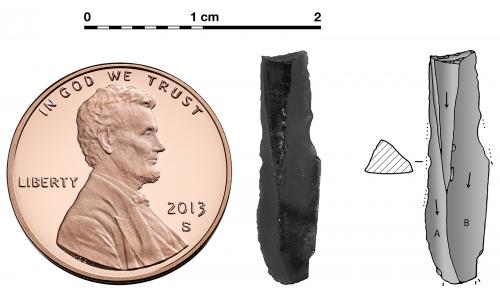
A new paper from YAXX Director Ellery Frahm and Christian Tryon of Harvard University was published online today at Journal of Archaeological Science: Reports. As described in the abstract, “Ninety years ago in the Zagros foothills of Iraq, Dorothy Garrod and her team excavated Zarzi cave, the type site of the Epipalaeolithic ‘Zarzian’ lithic industry. Garrod reported the existence of ‘two small fragments of obsidian’ in the principally chert-based microlithic assemblage. One of the two artifacts from Zarzi was analyzed by Renfrew and colleagues in a pioneering application of obsidian sourcing to the Near East, which elucidated links between Neolithic villages. It was, unfortunately, ambiguously assigned to their ‘Group 4c’ obsidian, which occurs at two different sources, ∼120 km apart, in eastern Turkey. New interpretive methods — agent-based models, least-cost path analysis, and others — have been applied to the datasets of Renfrew and colleagues, furthering work on the mechanisms of Neolithicization. With respect to the Epipalaeolithic, though, all of these studies rely entirely on this single Zarzi artifact with an inconclusive attribution. Fortunately, the second Zarzi obsidian ‘fragment’ — a burin spall — was ‘rediscovered’ at the Peabody Museum of Archaeology and Ethnology at Harvard. Our study establishes that both artifacts came from Nemrut Dağ volcano, 400 km linearly and ≳650 km on foot. To do so, multivariate analyses were applied to the original spectroscopic data of Renfrew and colleagues, while state-of-the-art portable XRF was used to source the burin spall at Harvard’s Peabody Museum. Comparison to two Epipalaeolithic sites in the Caucasus begins to reveal a patchwork of interaction spheres that highlight not only the potential of obsidian sourcing but also the considerable amount of work yet to be done.”
Link with free access for 50 days – click here!